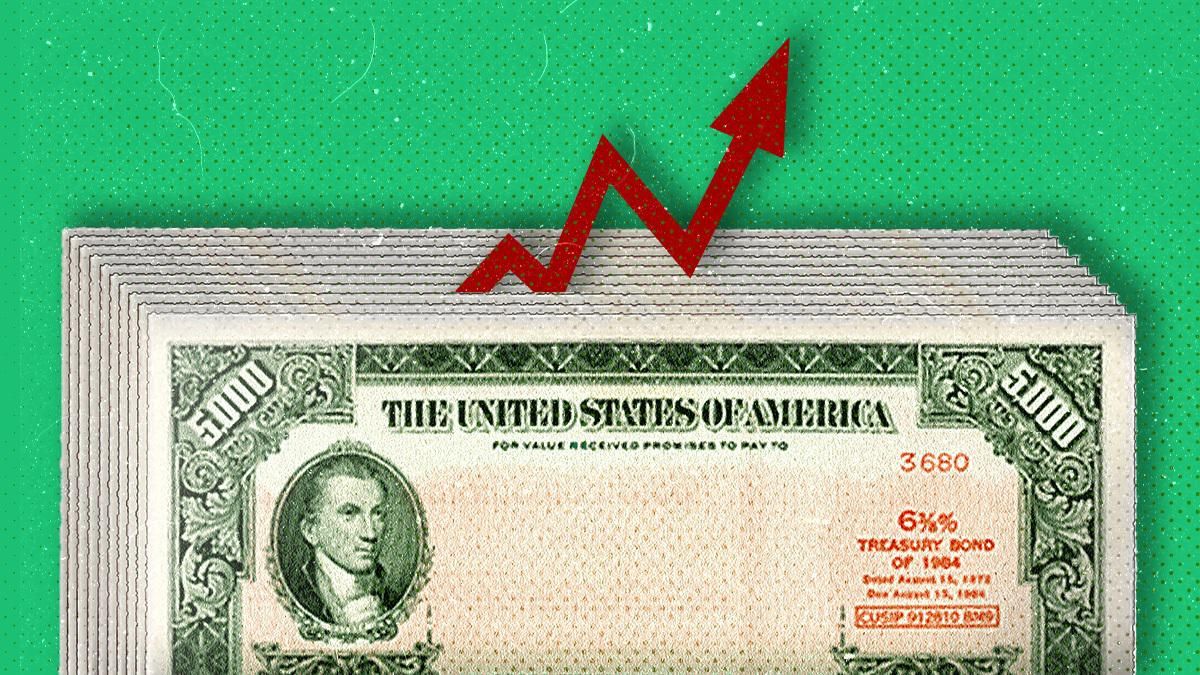Earlier this week, US gross national debt hit a new high, clocking $31 trillion. Gasp! That’s almost twice what it was a decade ago, and debt is now equal to well over 100% of GDP, hovering at the highest levels since World War II.
Is steadily rising US debt a problem, or is the risk of a financial meltdown overblown? Here’s a quick guide to the debate over debt.
First, what is it? When the federal government spends more than it raises through tax revenue, it runs a deficit. Those deficits are financed by selling Treasury bonds to investors. The US government promises to buy back the bonds by a certain date and repays the interest in the meantime. The total amount of money that the US owes to its creditors is the gross national debt. It rises when the government spends more or has to pay higher interest rates, and falls when the government takes in more revenue — either because of higher taxes or stronger economic growth (or both).
Who holds it? Government agencies hold some of it, but more than three quarters of US debt is held by the public, which includes private investors as well as foreign governments. Foreign governments currently hold about $7 trillion of it, with China ($1.2 trillion), Japan ($970 billion), and the UK ($630 billion) the top three creditors.
Has there always been debt? Yes, the United States first borrowed money (from France) to finance the American revolution! More recently, publicly held debt as a percentage of GDP was relatively low — below 50% — for decades after World War II, as strong growth and high taxes helped offset the costs of the Cold War and the war on poverty.
Tax cuts from the 1980s onwards started to push it up, as did spending for the global war on terror, but the big blow came with the Great Recession of 2009, when emergency stimulus combined with tax cuts set deficits soaring. Trump tax cuts, pandemic stimulus, and the Biden administration’s major spending initiatives pushed it up even further.
And with the Fed now raising interest rates sharply to combat inflation, borrowing costs are rising for everyone — including the federal government. That means the debt pile gets even larger. Today the amount of publicly-held national debt hovers near 100% of GDP, second only to Japan among advanced industrialized nations. But wait, there's more! The Congressional Budget Office has warned that with major government spending programs like Medicare and Social Security set to grow in the coming years as the US population ages, that number could hit 200% by mid-century.
How can the US keep doing this? The strength of the US economy and the fact that the dollar is the world’s most widely used currency mean that people and governments around the world see US treasuries as safe investments.
“The US has an extremely privileged position,” says Claudia Sahm, founder of Sahm Consulting and a former White House economist. “It's debt is the debt that the world wants — when bad things are happening in the world, the US is the safe asset.” There is a reason that the US has a sterling AAA rating from the major credit ratings agencies.
Wasn’t that credit rating dropped at one point? Yes, back in 2011. But that wasn’t because of fears about the US’ ability to pay back debt. It was about willingness: Congress was locked in a game of chicken over the Federal debt ceiling, an artificial limit on borrowing that has existed for almost a century and has been raised more than a dozen times. What ratings agencies started to worry about was whether political risks would interrupt US debt payments, not financial weakness.
Why are some people worried about all this debt? For one thing, the more the government spends on servicing debt, the less it has — in principle — for other spending priorities, like investments in infrastructure, health care, poverty reduction, or the military.
But the bigger — and much longer-term — worry is that the debt will eventually become so high that it could compromise Washington’s ability to pay it back. If that happened, withering trust in the world’s most important currency would send shockwaves through the global economy. Still, that is far, far off in any reasonable scenario, says Sahm. The US is still the world’s strongest and most dynamic economy.
So is that 31 trillion a problem? It’s just a number, says Sahm. As she sees it, the significance of the rising debt is less about scary numbers and more about priorities.
“The conversation shouldn't be about a number, it should be about: what is the government actually doing with taxpayers’ money?”
This article comes to you from the Signal newsletter team of GZERO Media. Sign up today.
- GOP partisanship could trigger first-ever US default - GZERO Media ›
- Senator Mitt Romney on Tiktok: shut it down - GZERO Media ›
- Explaining the long history of US debt (& which other countries are saddled with debt) - GZERO Media ›
- Podcast: Mitt Romney on uncharted US waters, Russian malevolence, & China’s economic ambition - GZERO Media ›
- US debt limit: default unlikely, dysfunction probable - GZERO Media ›
- US government shutdown: No end in sight - GZERO Media ›
- The fundraising prowess of "wokeism" - GZERO Media ›
- Who will cave on raising US debt ceiling (again?) - GZERO Media ›
